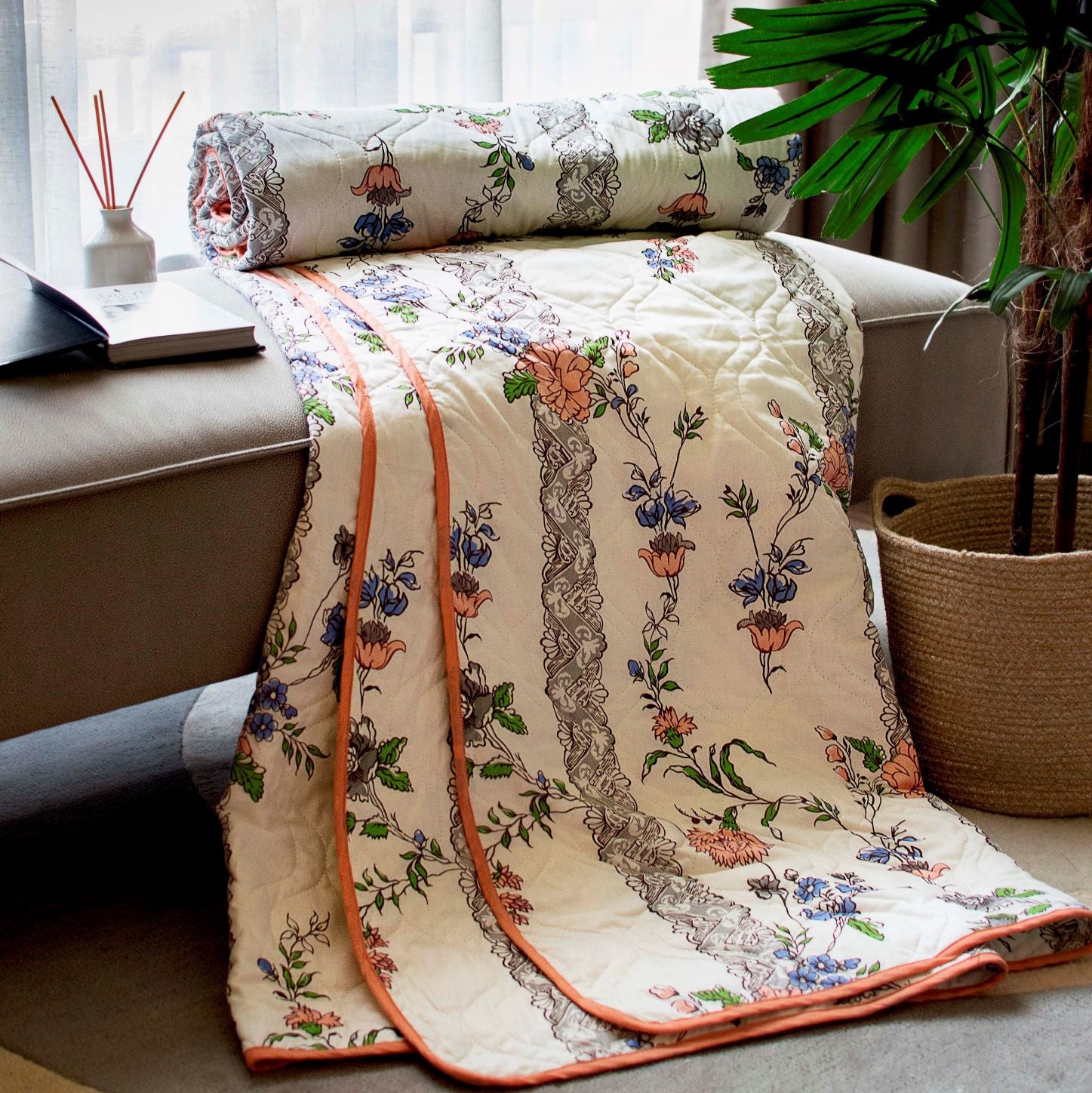Cotton Blankets: A Comprehensive Guide to Their History, Production, and Utility

Blankets have been an essential part of human civilization for centuries, providing warmth, comfort, and a sense of security. Among the various materials used for making blankets, cotton stands out as one of the most versatile and widely used. In this comprehensive guide, we will explore the history, production process, and utility of cotton blankets, shedding light on their significance in different cultures and contexts.
History of Cotton Blankets

The history of cotton blankets dates back thousands of years, tracing its origins to ancient civilizations such as those in India, Egypt, and China. Cotton cultivation and weaving techniques were developed independently in these regions, leading to the widespread use of cotton fabrics for various purposes, including blankets.
In ancient India, cotton was revered for its softness and breathability, making it an ideal material for blankets in the hot climate of the Indian subcontinent. The famous Indian cotton blankets, known as "dhurries" or "durries," were handwoven using traditional techniques passed down through generations.
Similarly, in ancient Egypt, cotton was cultivated along the banks of the Nile River, and cotton blankets were prized for their quality and comfort. The ancient Egyptians used cotton not only for clothing but also for bedding and other domestic purposes.
During the Middle Ages, the popularity of cotton blankets spread to Europe, where they became a symbol of luxury and prosperity. Cotton cultivation expanded, and with the invention of the spinning wheel and the mechanization of textile production, cotton blankets became more accessible to people of various social classes.
The Industrial Revolution marked a significant turning point in the history of cotton blankets, as advancements in technology led to the mass production of textiles. Cotton mills emerged in England and other parts of Europe, churning out vast quantities of cotton fabric, including blankets, to meet the growing demand of an expanding global market.
Production Process of Cotton Blankets

The production process of cotton blankets involves several stages, from cotton cultivation to weaving and finishing. Here is an overview of the key steps involved:
- Cotton Cultivation: Cotton is grown in warm climates around the world, with major producing countries including the United States, India, China, and Pakistan. Cotton plants require ample sunlight, water, and well-drained soil to thrive. After the cotton bolls ripen, they are harvested either by hand or using mechanical harvesters.
- Ginning: Once harvested, the cotton bolls are processed in a gin to separate the cotton fibers from the seeds and other impurities. The ginned cotton is then packed into bales for transport to textile mills.
- Spinning: At the textile mill, the cotton fibers are carded and spun into yarn using spinning machines. The yarn may undergo further processes such as twisting and plying to improve its strength and durability.
- Weaving: The yarn is then woven into fabric on looms, where vertical threads (warp) are interlaced with horizontal threads (weft) to create the desired pattern and texture. Cotton blankets may be woven using various techniques, including plain weave, twill weave, and jacquard weave.
- Finishing: After weaving, the cotton fabric is subjected to finishing processes such as bleaching, dyeing, and softening to enhance its appearance and feel. The finished fabric is then cut and sewn into blankets of various sizes and styles.
Utility of Cotton Blankets

Cotton blankets offer a range of benefits, making them a popular choice for bedding and other uses. Here are some of the key advantages of cotton blankets:
- Softness and Comfort: Cotton is known for its softness and breathability, making cotton blankets incredibly comfortable to sleep under. The natural fibers of cotton allow for better airflow, helping to regulate body temperature and keep users cool and comfortable throughout the night.
- Durability: Cotton blankets are durable and long-lasting, able to withstand regular washing and use without losing their shape or quality. High-quality cotton fibers are less prone to pilling and fraying, ensuring that cotton blankets maintain their appearance and performance over time.
- Versatility: Cotton blankets come in a variety of weights and thicknesses, making them suitable for use year-round. Lightweight cotton blankets are perfect for summer or warmer climates, while heavier cotton blankets provide extra warmth during the colder months.
- Hypoallergenic: Cotton is naturally hypoallergenic, making it an excellent choice for individuals with sensitive skin or allergies. Cotton blankets are less likely to cause irritation or allergic reactions compared to blankets made from synthetic fibers or wool.
- Easy Care: Cotton blankets are easy to care for and can be machine washed and dried for convenience. Regular washing helps to remove dust, dirt, and allergens, keeping cotton blankets clean and fresh for years to come.
Read More : Embracing Comfort: The Timeless Appeal of Cotton Blankets for Summer
Conclusion
Cotton blankets have a rich history and continue to be valued for their comfort, durability, and versatility. From ancient civilizations to modern-day households, cotton blankets have remained a timeless essential, providing warmth and comfort to people around the world. Whether used for bedding, picnics, or as decorative throws, cotton blankets offer a blend of practicality and luxury that is unmatched by other materials. As we look to the future, the enduring popularity of cotton blankets serves as a testament to the enduring appeal of this humble yet remarkable fabric.
